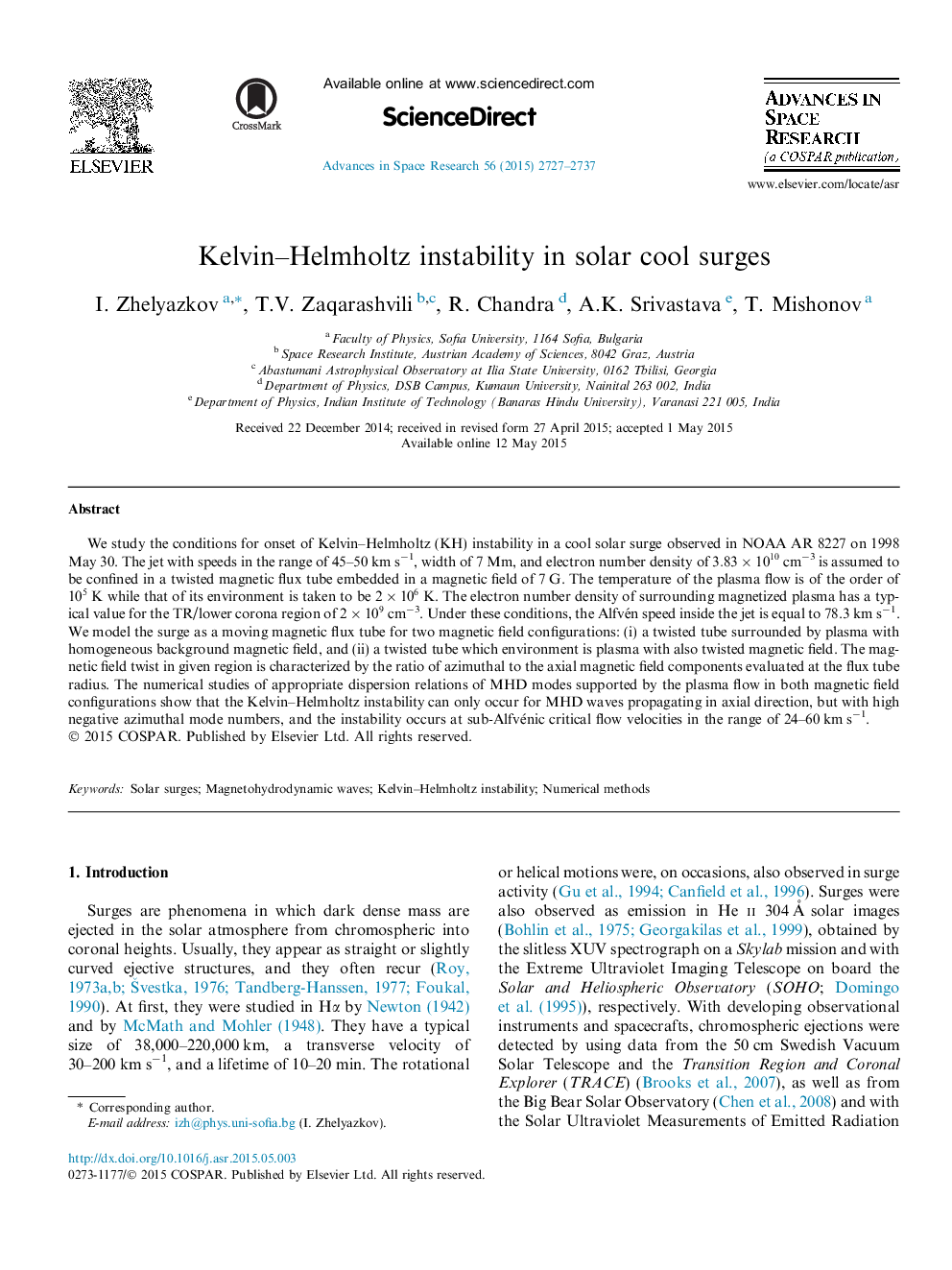| Article ID | Journal | Published Year | Pages | File Type |
|---|---|---|---|---|
| 1763509 | Advances in Space Research | 2015 | 11 Pages |
We study the conditions for onset of Kelvin–Helmholtz (KH) instability in a cool solar surge observed in NOAA AR 8227 on 1998 May 30. The jet with speeds in the range of 45–50 km s−1, width of 7 Mm, and electron number density of 3.83×10103.83×1010 cm−3 is assumed to be confined in a twisted magnetic flux tube embedded in a magnetic field of 7 G. The temperature of the plasma flow is of the order of 105105 K while that of its environment is taken to be 2×1062×106 K. The electron number density of surrounding magnetized plasma has a typical value for the TR/lower corona region of 2×1092×109 cm−3. Under these conditions, the Alfvén speed inside the jet is equal to 78.3 km s−1. We model the surge as a moving magnetic flux tube for two magnetic field configurations: (i) a twisted tube surrounded by plasma with homogeneous background magnetic field, and (ii) a twisted tube which environment is plasma with also twisted magnetic field. The magnetic field twist in given region is characterized by the ratio of azimuthal to the axial magnetic field components evaluated at the flux tube radius. The numerical studies of appropriate dispersion relations of MHD modes supported by the plasma flow in both magnetic field configurations show that the Kelvin–Helmholtz instability can only occur for MHD waves propagating in axial direction, but with high negative azimuthal mode numbers, and the instability occurs at sub-Alfvénic critical flow velocities in the range of 24–60 km s−1.
